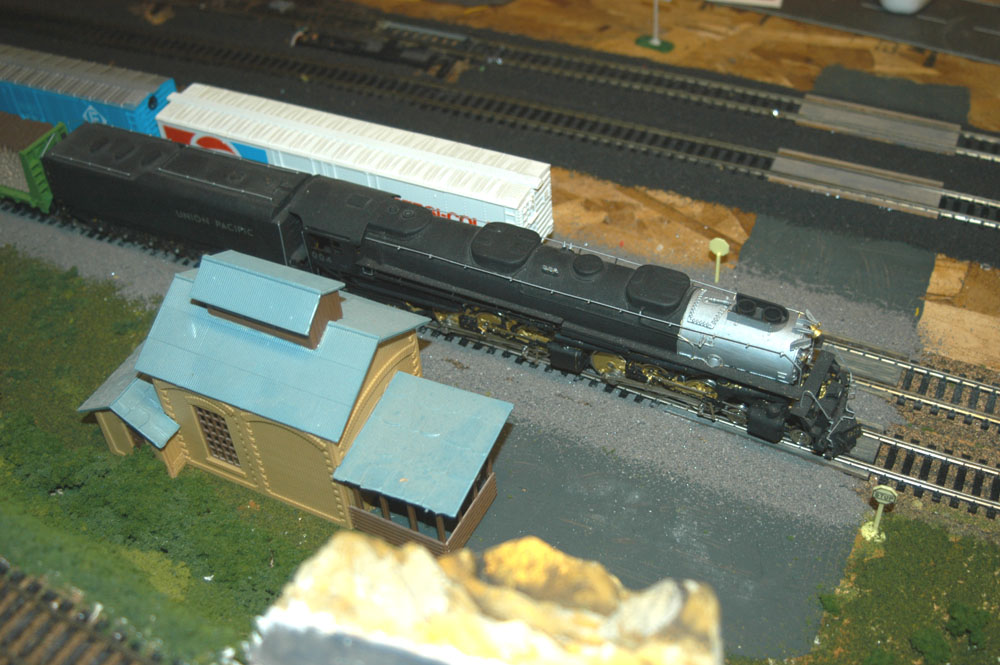The Challenger
105 Challengers were built for Union Pacific between 1936 and 1943. The name Challenger was given to steam locomotives with a 4-6-6-4 wheel arrangement. This means that they have four wheels in the leading "pilot" truck, which helps guide the locomotive into curves; two sets of six "driving" wheels, and finally, four "trailing" wheels, which support the rear of the engine and its massive firebox. Each set of driving wheels has its own steam cylinder. In essence, the result is two engines under one boiler. The frame of the locomotive is "articulated," or hinged, to allow it to go through curves. When watching the approaching locomotive go through a curve, you can see the boiler swing out left or right independently of the lower half of the engine, as the rear half of the locomotive remains in a straight direction until its wheels and frame are halfway through the curve. The Challengers were designed for fast freight service, but occasionally pulled passenger trains. They originally burned coal and pulled a tender with a 32-ton capacity. Their top speed was about 70 miles an hour, the engine weighed in at about 627,900 pounds, and the tender, which could hold 25,000 gallons of water, weighed about 446,000 pounds.
 |
| This is one of my best locomotives- an all brass model of the UP Challenger, which was often used to haul coal trains over Soldier Summit from Carbon County to the Wasatch front. It does not yet have sound installed but I hope to add that some day. |